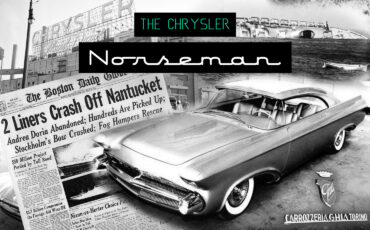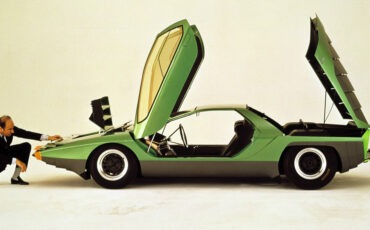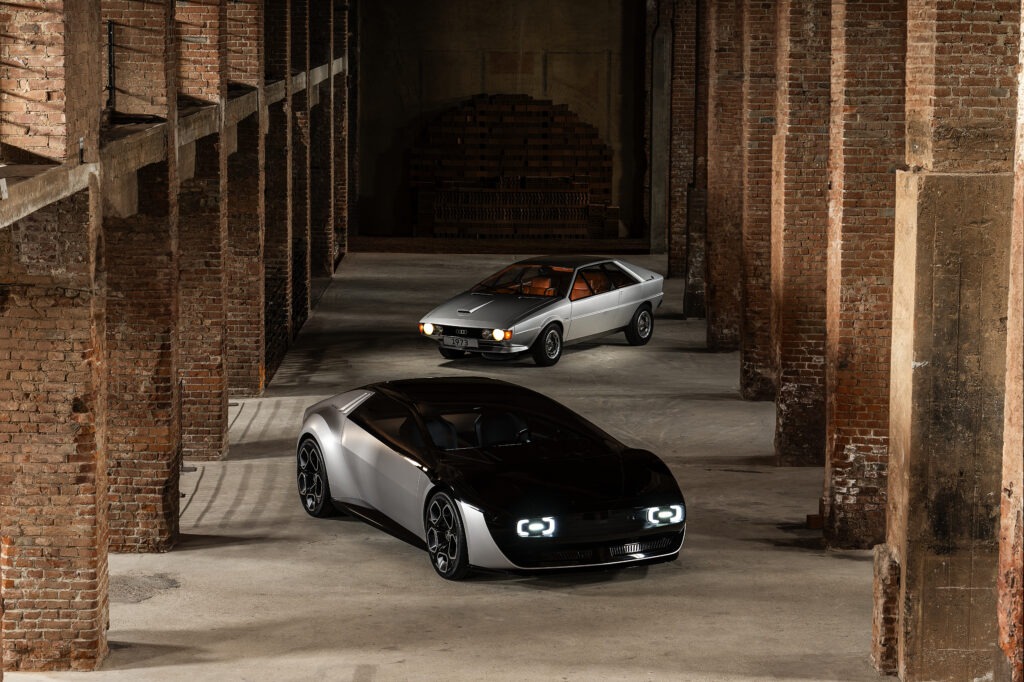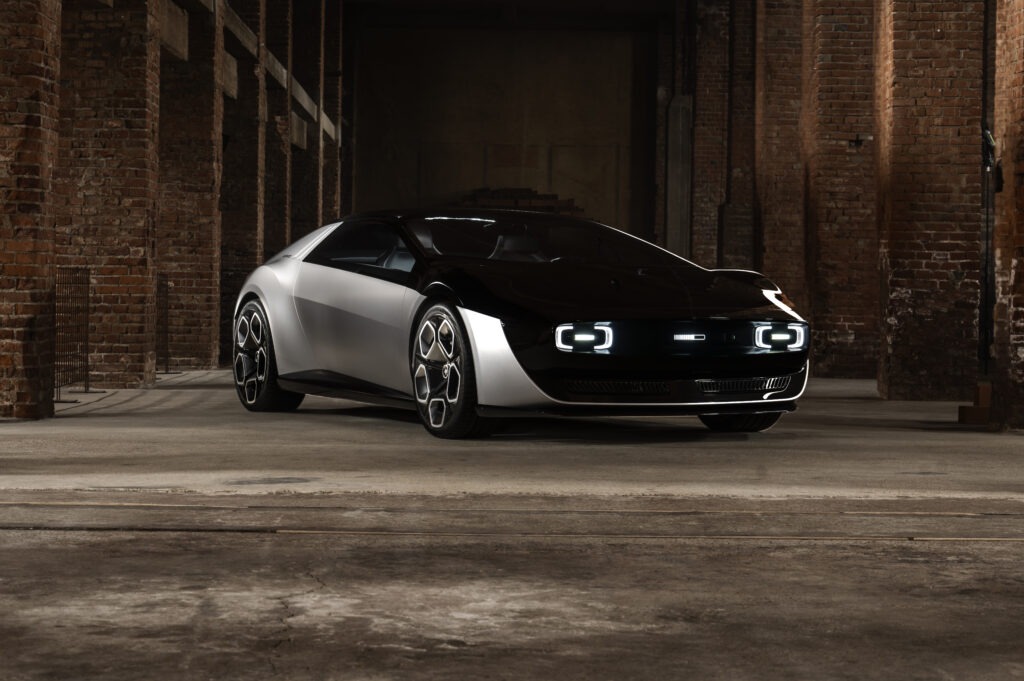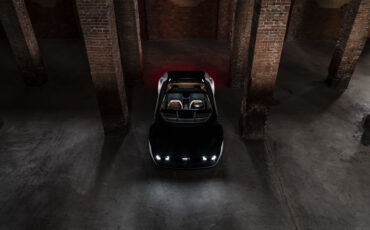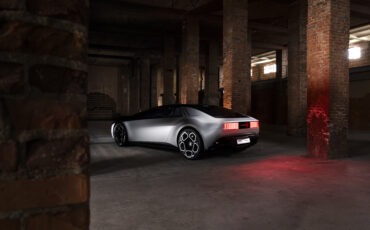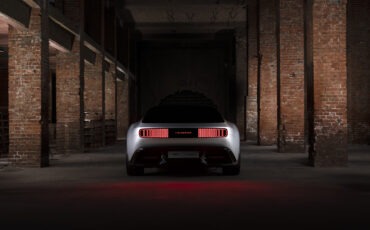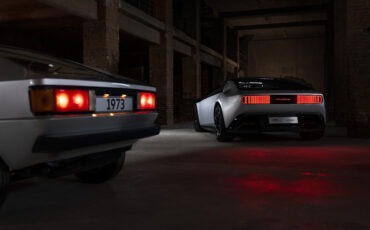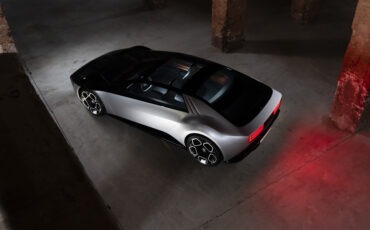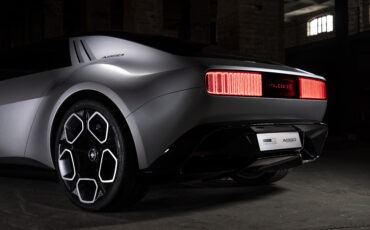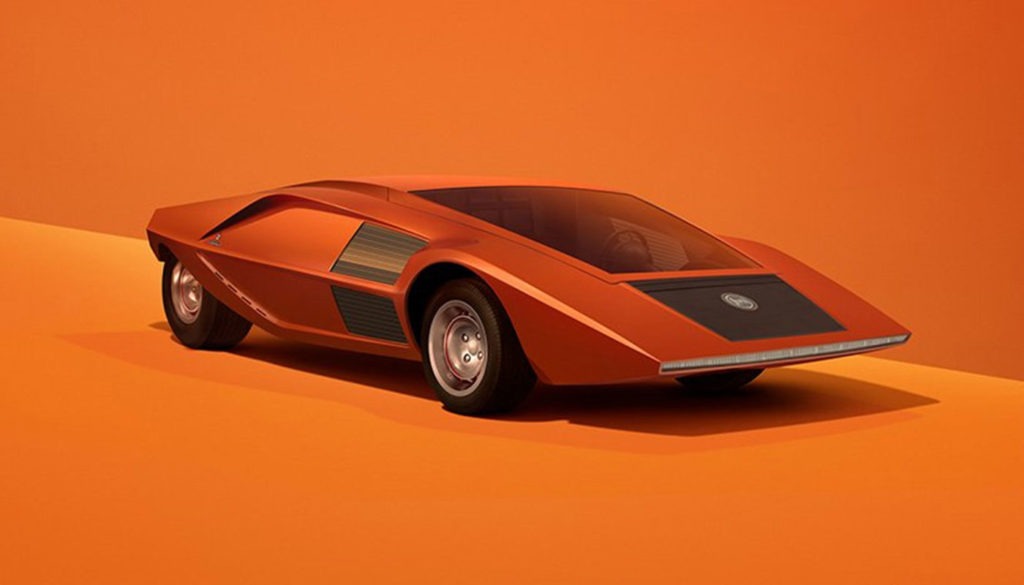
The origin of the Lancia Stratos Zero
The origin of the Lancia Stratos Zero is peculiar: In 1969 Lancia was bought by Fiat which decided to replace Fulvia with a new model for rally sports. Nuccio Bertone considered it as a good opportunity to start a project with Lancia which had long been having cooperation with Pininfarina and sometimes Zagato, but never with Bertone.
Bertone bought a friend’s crashed Fulvia 1600 HF personally and had his chief designer, Marcello Gandini design a least operational concept car on the chassis focusing on innovation. They were thinking of something even more eye catching than their Alfa Romeo Carabo presented 2 years before. Gandini, who at the time was working on bespoke Lamborghini Countach prototype, had the idea of a design to show how the exotic cars would look like in 30 years. The result was a bodywork that not after 30, but now 50 years, even a concept car can barely be this much ahead of its time, which seemed to be carved out of a solid copper block, just like Gandini desired.
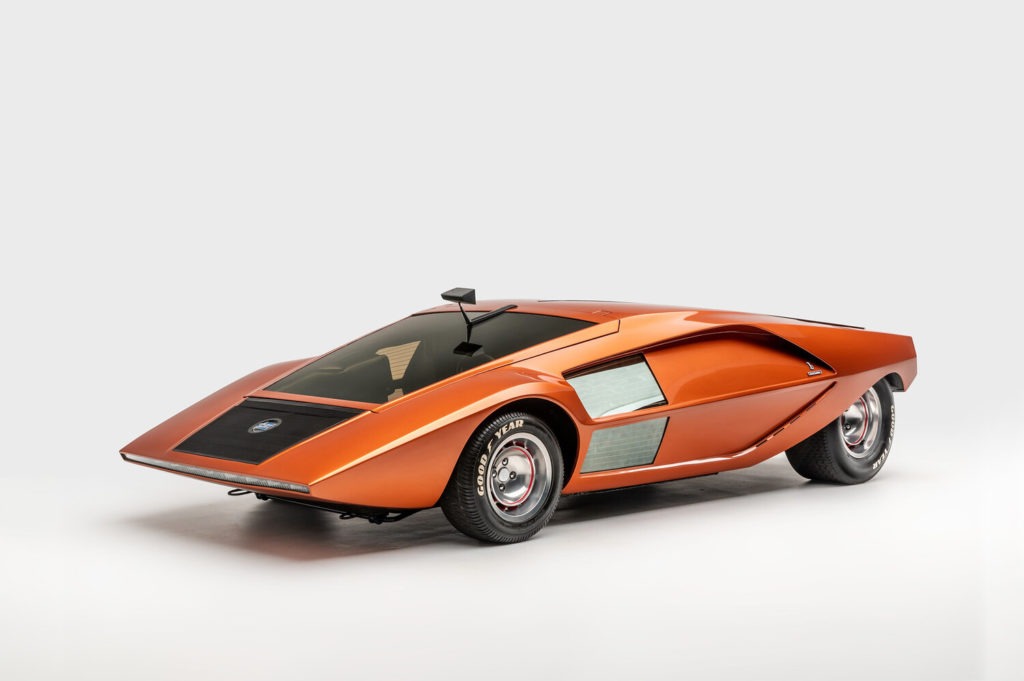
Lancia was informed of the new concept by Bertone just before the Turin Motor Show in October 1970, in which Lancia Stratos Zero was unveiled and extremely admired. Lancia immediately signed a contract with Bertone for a production model under the name Stratos which led to the birth of the legendary Lancia Stratos HF prototype, debuted at the 1971 Turin Motor Show.
Tecnical specifications
The Lancia Stratos Zero was a mid-engine 2-seat spaceship with a monocoque chassis and no conventional doors, but a lift-up canopy type large windshield which made it possible to enter the car by stepping on a rubber mat on the nose.
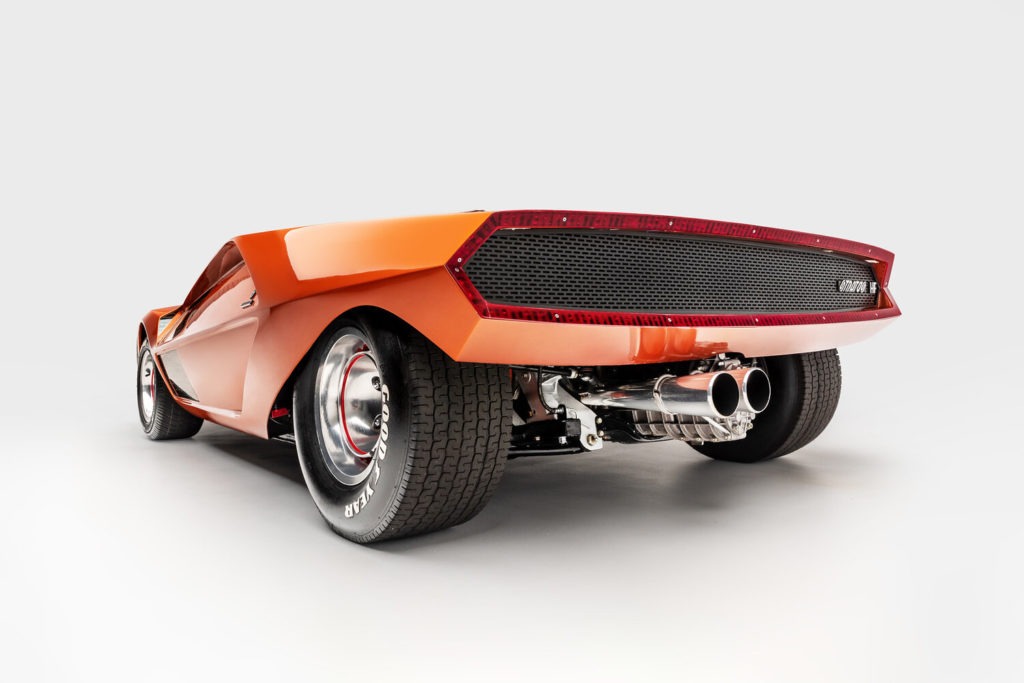
Rear fenders were Gandini’s signature also seen in the later designs like Countach, curved on chrome coated alloy wheels. The side opening triangle engine cover provided the air needed to cool down the engine through the vents between the 5 overlapped pieces. 10 slim headlights were accommodated in the nose, and 84 light bulbs fit all around the rear grille formed the taillight.
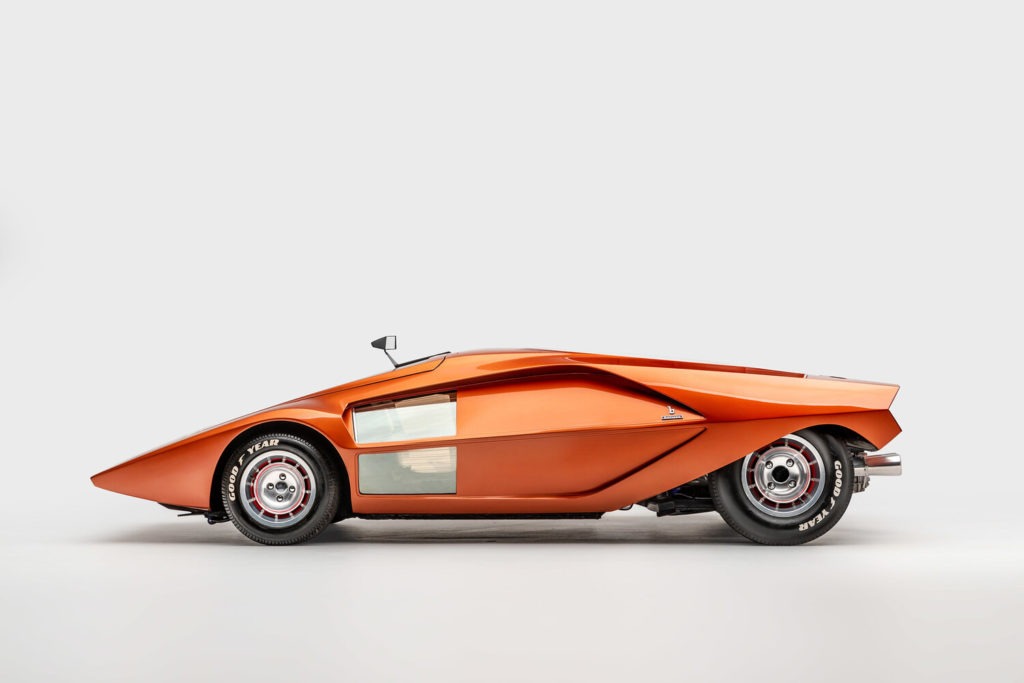
Lancia Stratos Zero was powered by Fulvia’s engine, an iron block alloy head DOHC 1584cc V4 @ 11° able to produce 132 bhp @ 6000rpm. It used 4 disk brakes, MacPherson strut suspension in the front and double wishbone with transverse leaf spring in the rear.
Photos courtesy of the Petersen Museum.

